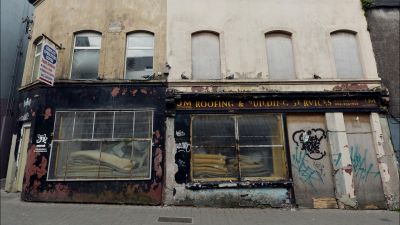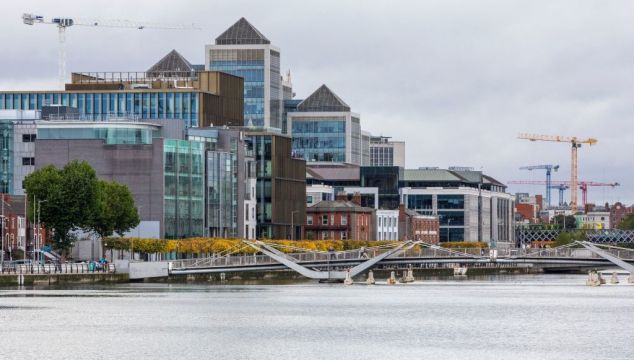While the Government may be looking for ways to improve the State's housing crisis, turning vacant commercial property into residential accommodation is a policy which has not been seen here on a large scale.
In the US, a record number of 20,100 apartment conversions were due to be finalised in 2021. Over the last two years, an estimated 41 per cent of converted apartments have come from former office buildings.
Meanwhile, in Ireland, there are plenty of vacant commercial properties just waiting to be renovated.
According to the Geo Directory Commercial Vacancy Rates Report for Q4 2021, there were 29,317 vacant commercial units dispersed across the State. This was the highest level recorded by GeoDirectory in nine years of reporting.
The county with the highest rate of vacant commercial property was Sligo at 20 per cent. Leitrim and Roscommon followed closely at 17.1 per cent.
Looking at towns, Ballybofey in Co Donegal had the highest commercial vacancy rate in the state at 30 per cent.
Overall, the report found that commercial vacancies increased in 15 out of 26 counties.
As the country emerges from the pandemic, and more people are working from home, it remains to be seen whether more offices are set to become redundant.
With so much vacant property lying idle, and while the housing crisis continues to plague the nation, it is hard to understand why vacant commercial property is not being converted into residential accommodation.
Wasted space
In his book A Little History of the Future of Dublin, former environment editor of The Irish Times Frank McDonald details some successful examples of converting a vacant commercial premises into residential accommodation.
In 2015, Clarendon Properties, owned by Paddy McKillen and Tony Leonard, installed eight large luxury apartments above the H&M store on College Green in Dublin.
According to Mr McDonald, nobody had ever lived in the former Hibernian Bank building, but Clarendon took the view that it would be ‘wasted’ as offices.
Speaking to Breakingnews.ie, Frank McDonald said there is no reason why converting vacant commercial spaces on a large scale basis shouldn't be done.
“I still think that in relation to redundant buildings that the first choice should be to renovate for residential," Mr McDonald said.
“I am speaking to you from a converted 1840s warehouse in Temple Bar that was renovated by Temple Bar Properties in 1995.
“It has five apartments over three ground floor retail units with independent access from the street to the upper floors.
“It was quite normal for Temple Bar Properties, in its heyday, to convert the upper floors of buildings into residential.
“It was feasible then, and I don’t see any reason why it shouldn’t be feasible now.”
Mr McDonald also pointed out the issue with office buildings that were built in the 1970s and 1980s which no longer meet contemporary office requirements.
"It seems to me to make a lot of sense to convert those buildings into residential rather than demolishing them," he said.
“The demolition of buildings entails a huge carbon cost. Every building contains embodied carbon. If we demolish, we are just adding to the burden of climate change.
“We do really have to consider in every case the possibility of renovating a building for alternative uses rather than going for demolition and replacement.”
'A systemic failure'
Mr McDonald was critical of Government housing policy which he said has "essentially been determined by the property lobby".
"What that involves is the creation of blocks of build to rent apartments which is the most profitable development model around and that’s of interest to big institutional investors."
An alternative approach suggested by Mr McDonald would be to convert vacant property on a building by building basis, giving jobs to small scale building contractors.
“It doesn’t mean you have to pack in loads of small units to make it viable.
“It can be done on the basis of say, in a standard four or five storey building, one apartment per floor which would be relatively generous with two or three rooms.”
Mr McDonald also stressed the point of affordability through conversion, adding that the housing crisis in Dublin is essentially a crisis of affordability.
Although the conversion of vacant and derelict commercial properties to residential has not happened in Ireland on a large scale like other countries, Mr McDonald said there is no reason why it couldn't be done.
“The local authorities have not been proactive in relation to all of this. There is no doubt about that,” Mr Mc Donald said.

“There is the derelict sites act, and it just hasn’t been applied in a lot of cases.
“The purpose of the legislation we have is to bring an end to dereliction and dis-incentivise the hoarding of buildings that are derelict and instead get them renovated or developed.
“A lot of [local authorities] seem to think older buildings are liabilities rather than assets.
“It is a systemic failure to recognise the value of town buildings as liabilities rather than assets and potential future homes where people would have immediate access to shops and other services.”







